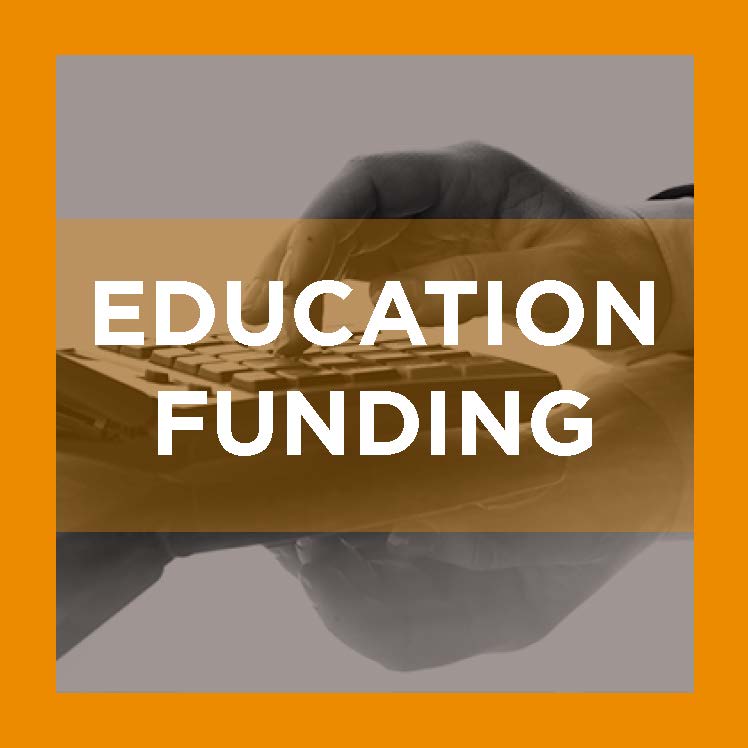While it’s currently just a proposal, President Trump’s fiscal year 2018 budget puts several big changes to student financial aid programs forward. Each of these proposals hold significant implications for state higher education policy leaders. In this blog post, I will briefly cover the main points and potential implications of each.
Creating a single income-driven loan repayment program
Currently, students looking to repay their loans based on their income rather than a standard repayment schedule are placed into one of a myriad of programs based on the types of loans they hold and when they borrowed. Trump’s budget proposes to collapse all programs into a single income-driven plan that caps payments to 12.5 percent of income and forgives remaining loan balances after 15 years for undergraduates, or 30 years for graduates. While students in the most generous of the current income-driven plans would see their monthly payments increase under this plan, they would be in repayment for a shorter period of time and therefore may pay less over the life of their loans.
Importantly, under the proposed budget plan, graduate students would need to make payments for a longer period. If the current financial hardship qualifications that exist for Income-Based Repayment and Pay as You Earn remain in place under the new plan, graduate student borrowers whose income increases over time would be at a higher risk of making their loans more expensive over time due to potentially paying less than the accrued interest earlier in repayment -- a risky phenomenon known as negative amortization.
Eliminating subsidized student loans
Currently, undergraduate students attending postsecondary institutions that cost more than their calculated ability to pay are eligible to have up to $23,000 of their loans subsidized, meaning that the federal government pays the interest that accrues on the loan while the student is completing their program. Eliminating the interest subsidy would make loans more expensive for undergraduate students to repay. The students most likely to be impacted by this proposal are students with very high levels of financial need, and students attending institutions with very high costs of attendance; the former a focus population for most state aid programs, the latter more likely to be from politically active families.
Eliminating Public Service Loan Forgiveness (PSLF)
Under current policy, students working in public service positions – employed by nonprofit organizations, not-for-profit organizations or a government organization, or serving a Peace Corps or an AmeriCorps term -- are eligible to participate in one of the existing income-driven repayment plans and have their remaining loan balance forgiven after only ten years of monthly payments. Eliminating PSLF would mean that students working in public service jobs could still participate in an income-driven repayment plan, but would be subject to the same number of payments as students in other professions. Under the Trump plan, this would be an additional five years of payments for undergraduates, and 20 years for graduates. For states, this may make public service careers less attractive for new graduates with student debt. Those that still opt into public service will devote more of their monthly income to loan repayment for a longer period.
Elimination of the Federal Supplemental Educational Opportunity Grant program (SEOG)
In FY 2017, the SEOG program provided $732 million to supplement Pell Grants for students at participating institutions. By eliminating the program, this budget would take grant aid away from students with the highest level of financial need. State leaders should remain aware that, should SEOG be eliminated in the final budget, levels of unmet need would increase in their states unless they take action to fill need gaps through alternative sources. Table 1 illustrates the amount of aid that states stand to lose.
Reductions to Federal Work-Study program
Work-study provides the opportunity for students with financial need to work in certain on- and off-campus jobs to earn work-study dollars on a regular pay cycle. Studies have found that students who are employed on campus are more engaged and likely to persist. Additionally, promising work from MDRC shows that disbursing aid at regular intervals -- rather than all once at the start of the term -- can also support persistence. The Trump proposal reduces federal funding for work-study by approximately half. Essentially, this would amount to cutting jobs among students who need flexible employment options while attending school. In 2015, 14 states provided just under $80 million in state-funded work-study, leaving a large potential deficit for students seeking campus employment. Again, Table 1 quantifies the potential loss in work-study support by state.
Supporting Year-Round Pell Grants
Students with financial need are currently unable to access Pell Grant support for more than two full-time semesters, leaving them with little to no federal student aid if they wish to attend year-round. Year-round Pell means that students can access more of their aid on an accelerated timeline, an idea which has received wide support.
However, students are at risk of exhausting their lifetime eligibility for Pell Grants faster than in the past -- so it will be key that students exercising this option take summer courses that meet degree requirements and bring them closer to the graduation podium on an accelerated timeline. States would be wise to think of ways to pair state financial aid programs to support full-time, year-round enrollment for the specific subset of students that would benefit from such a policy.
In sum, the proposed Trump budget contains many changes to how students would access financial support for college attendance. States add an additional $12 billion in support through state grants, loans and loan forgiveness programs on top of federal subsidies, some of which are strategically built around federal supports. State education policy leaders should consider these questions:
- Do existing state grant and scholarship programs contain flexibility to support and strengthen year-round attendance, in alignment with federal programs?
- Are any existing state loan forgiveness programs fully leveraging the benefits already available at the federal level? Could they be better-targeted?
- Is your state ready to support the provision and deployment of accurate information and advising regarding federal student loan repayment?
- Given the demonstrated benefits of student employment through work-study, would your state enact or expand state-funded options for student workers?
- Losing SEOG would increase unmet need levels in your state unless need-based aid is enhanced. If lowering levels of unmet need is a priority in your state, how would you act to fill this new deficit?
While much remains to be determined before the federal budget is enacted, it is clear that changes to federal student aid will be on the horizon. Education Commission of the States remains available to assist states in understanding changes at the federal level, and their implications for their specific state contexts.










